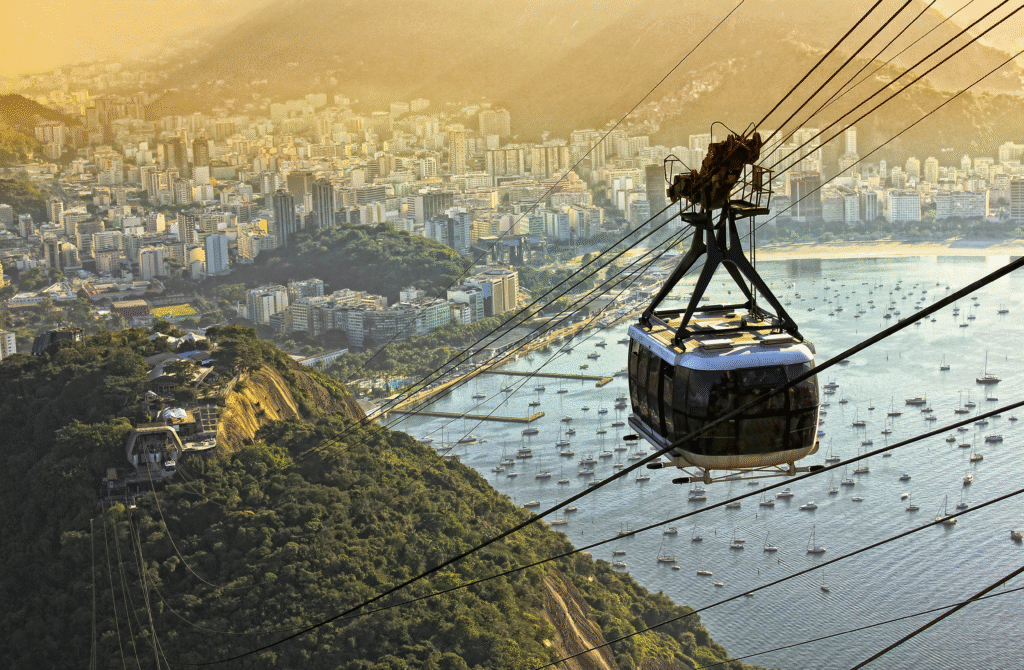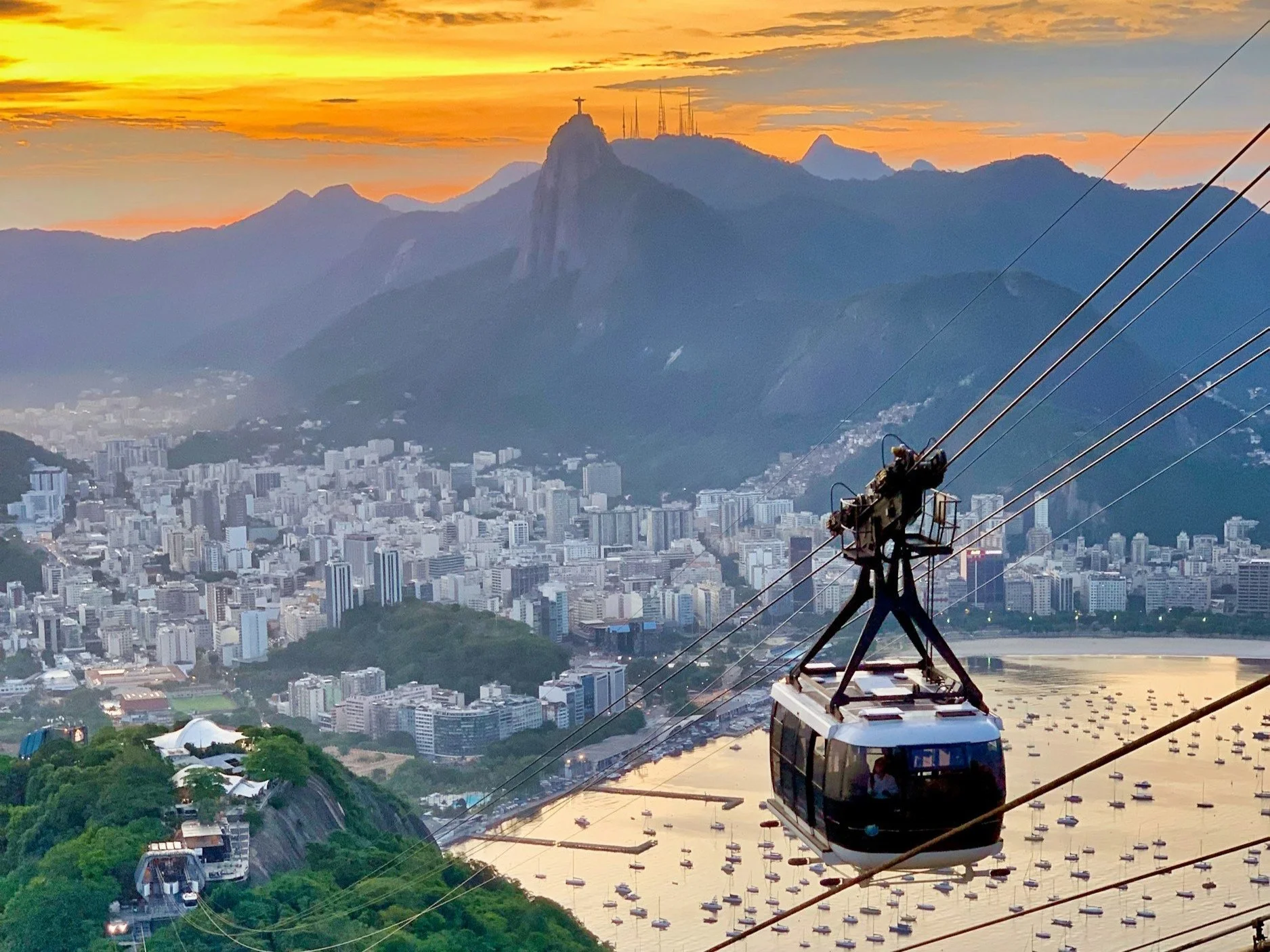There is a street in Rio de Janeiro that defies the city’s typical postcard imagery. It is not a sun-drenched stretch of Copacabana or Ipanema, nor is it the bustling historical artery of Avenida Rio Branco. This street is a statement of ambition, a feat of engineering, and a narrative thread stitching together the city’s glamorous south zone with its working-class northern heights. Its name is as direct and evocative as its path: Avenida do Escapamento. Translated simply as “Exhaust Avenue,” the name hints at the strain of the climb, the groan of engines, and the sheer effort required to conquer it. But to know Escapamento is to know a different Rio—a city of dramatic contours, social contrasts, and breathtaking vistas that have inspired artists, challenged drivers, and captivated residents for nearly a century.
To understand Escapamento, one must first understand the geography it so boldly confronts. Rio de Janeiro is a city sculpted by violence—the geological violence of granite peaks erupting from the Atlantic coast. These mountains create a stark division between the wealthy, tourist-friendly Zona Sul (South Zone) and the vast, sprawling Zona Norte (North Zone). For decades, the primary connection was a slow, winding road through the Túnel Velho (Old Tunnel) built in the late 19th century. As Rio grew in the early 20th century, fueled by the automotive age and a spirit of modernism, this link became a bottleneck. The city needed a more direct, more impressive gateway.
The answer was the Túnel Novo (New Tunnel), officially named Túnel Engenheiro Carlos Marques Pamplona, inaugurated in 1963. But a tunnel needs approaches. While the north side had a gentler incline, the south side presented a sheer wall of rock, the foothills of the Serra da Carioca. The solution was not a gentle slope but a radical, almost audacious, engineering statement: a soaring viaduct that would leap from the mouth of the tunnel and cling to the mountainside, ascending rapidly to the neighborhood of Santa Teresa. This viaduct, and the road that continues from it, is Avenida do Escapamento. It is a road built not to meander, but to conquer.
The Engineering Marvel: A Road on Stilts
The journey begins at the southern mouth of the tunnel, in the leafy, affluent neighborhood of Laranjeiras. Here, the scale of the endeavor is immediately apparent. The Laranjeiras Viaduct, the official name for the most dramatic section of Escapamento, is a colossal structure of reinforced concrete. It doesn’t just cut into the mountain; it strides out from it, supported by a series of towering pillars that sink into the ravine below. Driving onto it feels like taking off. The city of Laranjeiras—its grand old homes, the campo of football club Flamengo—falls away abruptly beneath you. You are suddenly suspended in the air, eye-level with the tops of imperial palm trees.

This viaduct is a prime example of the bold, modernist architecture that characterized the development of Rio in the mid-20th century. It is functional, yes, but it is also sculptural. The rhythm of the support pillars creates a powerful visual pattern, a man-made echo of the natural verticality of the surrounding landscape. For engineers and urban planners, it is a masterpiece of necessity. The incline is steep, a consistent challenge for any vehicle with a weak engine or faulty brakes. The curves are tight, demanding attention. The name “Escapamento” earns its keep here; you can hear the strain of buses and trucks as they downshift, their exhaust fumes a testament to the climb.
But the engineering is only half the story. As the viaduct curves around the mountain, it reveals the first of its many breathtaking views. To the right, the entire Zona Sul unfolds like a pop-up book. There is the iconic Pão de Açúcar (Sugarloaf Mountain), the glistening waters of Guanabara Bay, and the urban tapestry of neighborhoods like Botafogo and Flamengo. It is a panoramic spectacle offered gratuitously to commuters, a daily reminder of the stunning beauty that makes Rio unique. This is the essential duality of Escapamento: it is a utilitarian infrastructure project that doubles as one of the city’s most spectacular observation decks.
A Street of Two Worlds: From Laranjeiras to Santa Teresa
The viaduct culminates as it connects solidly with the mountainside, but the avenue continues its ascent, now carved into the rock face. The character of the road changes here. It becomes narrower, more intimate, clinging to the edge of the Santa Teresa hill. This section of Escapamento is a borderland, a liminal space between two very different Rios.
On the lower side, the views continue to sweep over the ordered, high-rise world of the Zona Sul. On the upper side, the landscape is wilder, more tangled. Lush Atlantic rainforest, resilient and vibrant, spills over the retaining walls. This is the beginning of Santa Teresa, a neighborhood with a soul all its own. Historically a wealthy enclave for coffee barons in the 19th century, accessible only by a winding tram line, Santa Teresa evolved in the 20th century into a bohemian refuge for artists, intellectuals, and musicians. Escapamento became its modern lifeline, its connection to the rest of the city.
The road, therefore, functions as a socio-economic conveyor belt. It brings the influences of the formal, corporate city up the hill, and it carries the artistic, slightly disheveled, and culturally rich energy of Santa Teresa back down. During the day, it is busy with delivery vans, buses, and residents going about their business. At night, it becomes the route for those seeking the neighborhood’s famous samba parties, bistros, and art studios. The street itself is lined with a curious mix of infrastructure—massive water pipes that serve the city, electrical substations—and decaying grandeur. Old mansions, some beautifully restored, others crumbling into romantic ruin, peer out from the foliage, their windows overlooking the dizzying drop.
This juxtaposition is at the heart of Escapamento’s charm. It is a place where nature and urbanity, wealth and bohemia, history and modernity are in constant, visible tension. The street is not a destination in itself; it is a passage. Yet, within that passage, one can read the complex story of Rio de Janeiro.
The Cultural Escapamento: A Muse for Artists
A place of such dramatic character was bound to capture the artistic imagination. Avenida do Escapamento has been immortalized in song, film, and literature, often as a symbol of Rio’s vertiginous geography and its melancholic beauty.
Most famously, it is the title and subject of a classic samba by the legendary composer Nelson Cavaquinho. His song “Escapamento” is not a celebration of the engineering feat, but a poignant, heartbreaking metaphor. Cavaquinho uses the image of a faulty car exhaust to describe a failing love affair:
“O escapamento do meu carro / Está fraco, já não faz barulho…”
(“The exhaust of my car / Is weak, it no longer makes noise…”)
The car, a symbol of modernity and freedom, is broken. It can no longer climb the hill. The singer is stuck, unable to move on, just as his love has stalled. The specific choice of Escapamento is genius. It’s not just any hill; it is the city’s most challenging ascent. A love that fails on Escapamento is a love that has faced the ultimate test and been found wanting. The song transforms the avenue from a physical place into a landscape of the soul—a place of struggle, exhaustion, and ultimate resignation. It is a perfect example of how Cariocas (Rio residents) anthropomorphize their city, attributing human emotions to its streets and hills.
Beyond samba, the street has featured in countless films and TV shows as an establishing shot, instantly communicating that the action is taking place in Rio. Its unique vantage point makes it a favorite for photographers and filmmakers seeking to capture the city’s scale and topography. The view from Escapamento is less curated than from the Sugarloaf or Christ the Redeemer; it is a cityscape earned by the journey, a glimpse of the metropolis from its shoulder, both inclusive and distant.
The Human Experience: Walking, Driving, and Surviving
To travel on Avenida do Escapamento is to engage in a specific, visceral urban experience. Each mode of transport offers a different perspective.
For the driver, it is a test of skill and vehicle. The ascent requires a confident gear change and a steady foot. The descent is even more demanding, a constant exercise in engine braking to avoid overheating the brakes. The merges are tight, the lanes are narrow, and the proximity to the edge, often guarded by nothing more than a low curb, can be nerve-wracking for the uninitiated. There is no room for error. Yet, for daily commuters, it becomes a ritual. The moment of emerging from the dark tunnel onto the soaring viaduct, with the city laid out in a sudden explosion of light and space, is a daily moment of awe that never quite loses its power.
For the pedestrian, Escapamento is an even more potent experience, though a perilous one. Narrow sidewalks cling to the mountainside. Walking up is a strenuous workout; walking down offers leisurely, ever-changing perspectives. Pedestrians are intimately connected to the sounds and smells of the street—the roar of engines, the smell of exhaust and blooming tropical flowers, the cool shade of the overhanging trees. They can pause to look down into the gardens of the houses below or gaze out at the distant planes gliding into Santos Dumont Airport. It is a walk that feels both urban and profoundly natural. However, it is also a reminder of the city’s inequalities. The homes clinging to the hill are a mix of the elegant and the improvised, a visual dictionary of Brazilian architecture and social class.
For the cyclist, Escapamento is a legendary climb, a rite of passage in the Rio cycling community. Conquering its steep gradient is a badge of honor, a test of physical and mental endurance. Cyclists share stories of their first successful ascent, of the burn in their legs, and the unparalleled reward of the view from the top. It features in local cycling races and is a regular training ground for the city’s most dedicated riders. The descent, while fast and thrilling, is fraught with danger, requiring extreme caution on the tight curves.
Challenges and the Future: The Street in the 21st Century
Like much of Rio’s infrastructure, Avenida do Escapamento shows its age. The concrete of the viaduct is stained by weather and pollution. The constant heavy traffic takes its toll on the road surface. The issue of maintenance is constant. Furthermore, the street exists in a city grappling with profound social challenges. The wooded areas around it have, at times, been sites of conflict, reflecting the security issues that plague the metropolis.
Yet, Escapamento endures. It remains an absolutely vital artery. Any closure of the tunnel or the avenue causes traffic paralysis across the entire city, a testament to its irreplaceable role in Rio’s circulatory system. Proposals for new tunnels or public transport links are often debated, but Escapamento’s position seems unassailable.
Its future likely lies not in replacement but in adaptation. As Rio, and the world, moves towards greener urban solutions, the challenge will be to integrate this mid-20th-century marvel into a 21st-century sustainability model. Could dedicated bus lanes make public transport more efficient? Could the pedestrian experience be made safer and more inviting, transforming it into a designated viewpoint or cultural walk? These are questions for a new generation of urban planners who must balance the preservation of a historical landmark with the evolving needs of a dynamic city.
Conclusion: More Than a Road
Avenida do Escapamento is not merely a street. It is a landmark, a character, a verb. To “subir o Escapamento” (go up Escapamento) is a distinct action in the life of a Carioca. It is a geographical and psychological transition. It is a road that demands something from you—be it effort, attention, or reflection—and in return, it offers a perspective on Rio that is impossible to find anywhere else.
It is a symbol of the city’s audacious spirit, its willingness to bend nature to human will. It is a canvas upon which the social and cultural dynamics of Rio are constantly painted. It is a muse that has inspired some of Brazil’s most poignant art. And it is a shared experience, a common reference point for millions who have felt the strain of its ascent and the thrill of its vista.
In the end, the name “Exhaust Avenue” tells only a small part of the story. It speaks to the mechanical effort, but not to the human spirit. The true exhaust is not just from car engines; it is the expended breath of the cyclist, the sigh of the lovelorn in Nelson Cavaquinho’s samba, the gasp of the tourist seeing that view for the first time. Avenida do Escapamento is a monument to the journey itself—a relentless, beautiful, and unforgettable climb into the heart of Rio de Janeiro.

